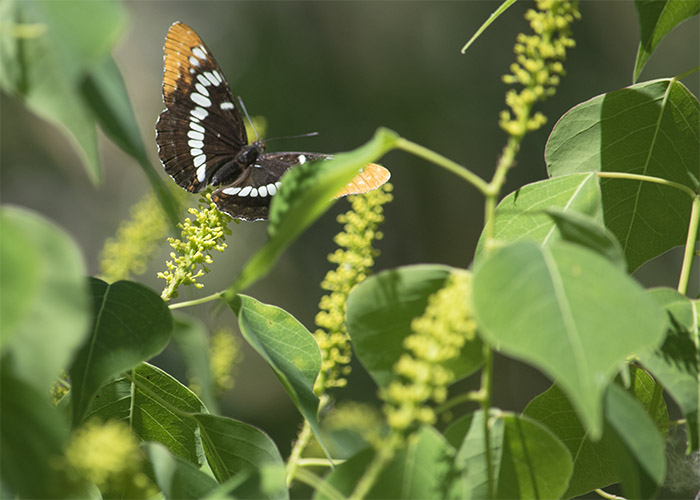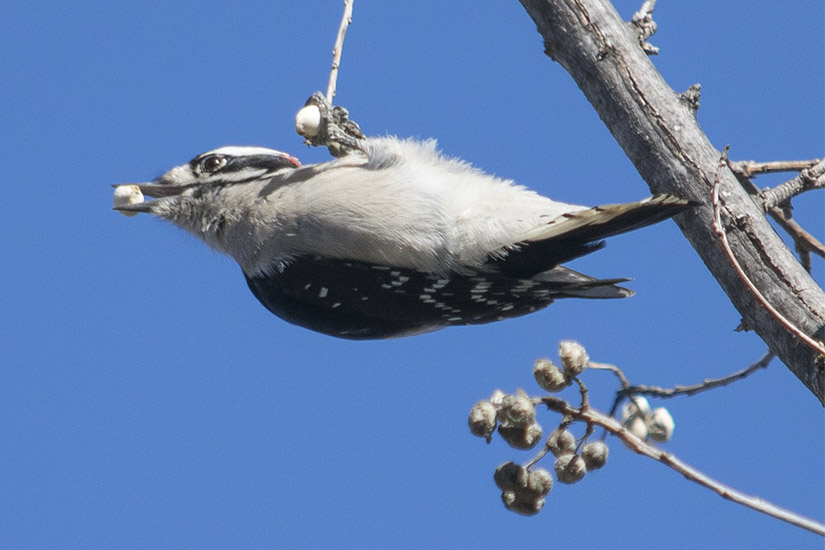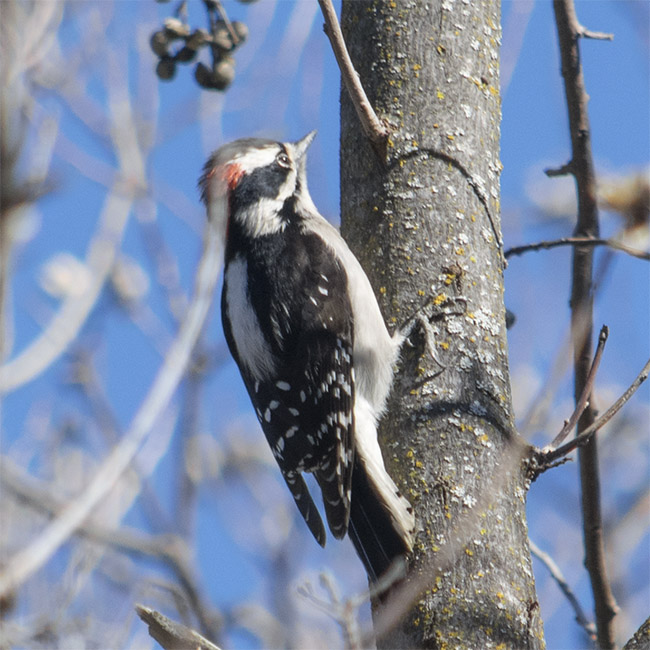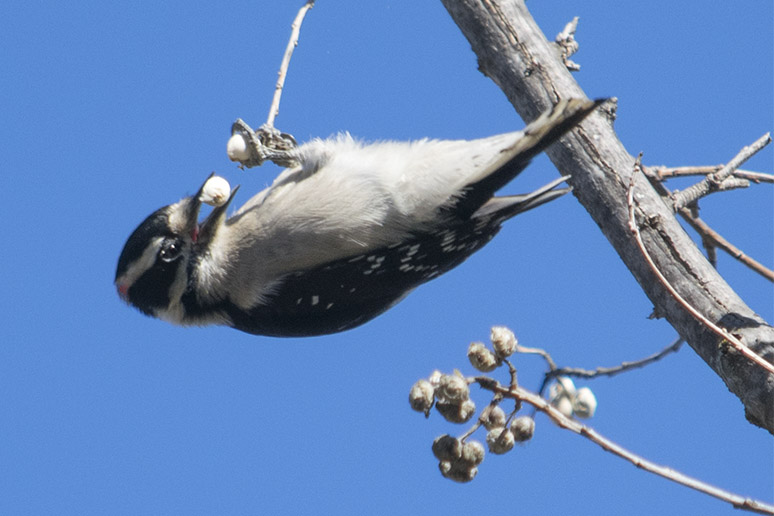Downy Woodpeckers
Smallest of all the woodpeckers of North America, the Downy Woodpecker can be found in mixed flocks of birds in winter searching for foods such as insects, seeds, and berries. By joining these groups all birds benefit from having better chances of finding food sources and being alerted to nearby predators. The male Downy Woodpecker (which has a red cap) in the next image was foraging with a flock of Bushtits & other birds within the Monte Verde wetland habitat. Stiff tail feathers serve as a prop to support the birds while moving along tree trunks and branches. Food items that larger woodpeckers cannot reach, such as insects found on or in the stems of plants, are eaten by Downy Woodpeckers.

Easily mistaken for each other, Downy & Hairy Woodpeckers have a similar appearance. The Hairy Woodpecker is about a third larger in size and has a longer beak. Downy Woodpeckers have a few black bars on their white outer tail feathers while the outer white tail feathers on the Hairy are usually unmarked.
Why do these two species resemble each other?
Recent studies have found evidence that the Downy and Hairy Woodpeckers are an example of “plumage mimicry”, where one species of bird evolves to match the plumage patterns and colors of another. It is suggested that the smaller, more passive Downy Woodpecker might have evolved to look like the larger, more aggressive Hairy woodpecker to discourage predators or to intimidate competitors. For more information visit the article link here (“Are Woodpeckers Evolving To Look Like Each Other? A New Study Says Yes”).
A source of food for many species of birds in the area is the white fruit/seeds of the non-native Chinese Tallow tree (Triadica sebifera), also known as Popcorn trees. The seeds have a fatty coat containing tallow that may be used to make soap or candles. In summer the blossoms of the trees are also a good source of nectar for honey bees and other pollinators. However, since the trees are quick to invade after disturbances and have a high growth rate they can out-compete native vegetation, reducing the overall diversity of plants within a habitat. Research has determined that the Chinese Tallow tree may be a useful source to create biodiesel fuel from since the trees often will grow in land that cannot be used for crops.

Lorquin’s Admiral Butterfly on Chinese Tallow flower, Monte Verde Wetlands. June 2019 
Downy Woodpecker with seed from Chinese Tallow tree, Monte Verde Wetlands, November 2021
References
- “Downy Woodpecker and Hairy Woodpecker.” FeederWatch, 19 Nov. 2013, https://feederwatch.org/learn/tricky-bird-ids/downy-woodpecker-and-hairy-woodpecker/.
- “Downy Woodpecker Overview, All about Birds, Cornell Lab of Ornithology.” Overview, All About Birds, Cornell Lab of Ornithology, https://www.allaboutbirds.org/guide/Downy_Woodpecker/overview.
- Campbell, Victoria. “Are Woodpeckers Evolving to Look like Each Other? A New Study Says Yes.” All About Birds, 17 June 2019, https://www.allaboutbirds.org/news/are-woodpeckers-evolving-to-look-like-each-other-a-new-study-says-yes/.
- “Triadica Sebifera.” Wikipedia, Wikimedia Foundation, 8 Aug. 2021, https://en.wikipedia.org/wiki/Triadica_sebifera.

